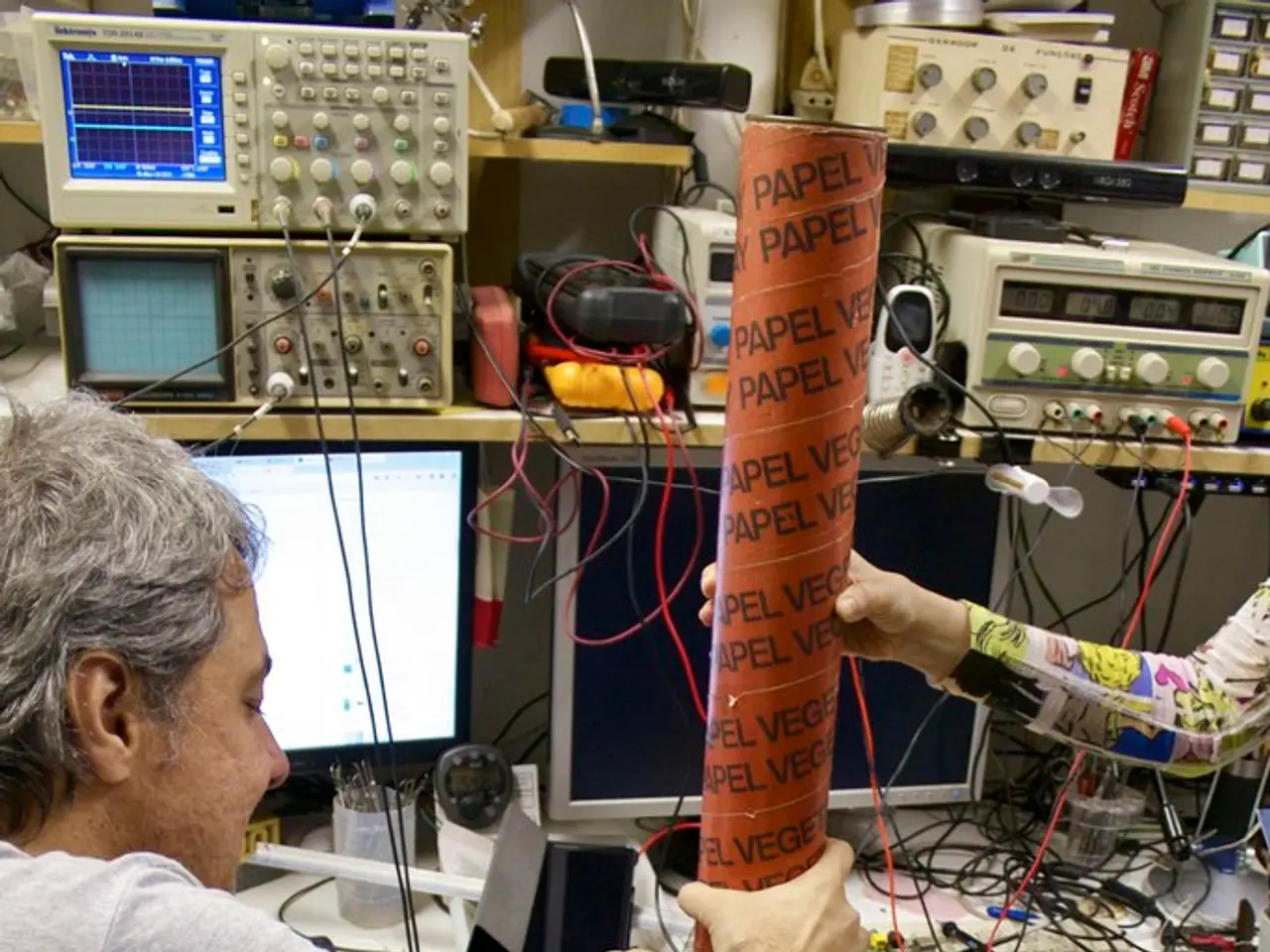Electromyography (EMG) Explained: An Understanding of Its Function and Mechanism
In the realm of physiology, one non-invasive technology stands out for monitoring the intricate workings of muscle activity: Electromyography (EMG). This technique offers a unique window into the world of muscle contraction, providing valuable insights into cognitive-behavioral processing and motor control.
The process begins in the motor cortex, where action potentials are generated by the primary motor cortex, which then travel via upper motor neurons down the corticospinal tract to the spinal cord. Here, they synapse with lower motor neurons, which are responsible for innervating muscles directly at the neuromuscular junction.
Upon arriving at the neuromuscular junction, the action potentials trigger the release of neurotransmitters, leading to muscle fiber depolarization, excitation-contraction coupling, and ultimately muscle contraction. This electrical activity of muscle fibers during contraction can be recorded as an EMG signal.
The key steps in this process are as follows:
- Motor Cortex Initiation:
- The primary motor cortex generates action potentials in upper motor neurons.
- These signals pass through various descending pathways (such as corticospinal tracts) to the spinal cord.
- Transmission to Motor Neurons:
- Upper motor neurons synapse with lower motor neurons in the spinal cord.
- Lower motor neurons send action potentials along peripheral nerves toward muscle fibers.
- Neuromuscular Junction and Muscle Fiber Activation:
- Arrival of action potentials causes acetylcholine release at the neuromuscular junction.
- Muscle fibers depolarize, triggering calcium release and muscle contraction.
- Muscle Contraction and EMG Observation:
- Muscle contraction involves electrical changes in muscle fibers.
- EMG records the summed motor unit action potentials from contracting muscle fibers.
- Changes in EMG amplitude and duration correspond to motor unit recruitment and muscle force generating capacity.
EMG thus provides a non-invasive measure of how the motor cortex's signals translate into electrical activity in muscles during movement and muscle contraction. Modulation of motor unit recruitment and firing patterns reflected in EMG helps understand fatigue, motor control, and muscle performance.
In the case of facial expressions, EMG can provide valuable information about non-visible muscular activity and suppressed expressions, thanks to advanced techniques like fEMG. The 43 muscles in the face, controlled by the seventh cranial nerve, can be monitored using EMG electrodes placed on the skin. However, high-quality data collection requires careful preparation, such as cleaning the recording sites and removing makeup.
For optimal results, the choice of the reference site is crucial. Bony body parts such as elbows, hips, or collar bones are recommended for reference site placement. Despite the complexity of facial EMG recordings due to the number of muscles involved, this technology offers invaluable insights into the intricacies of facial expressions and motor control.
In conclusion, EMG serves as a powerful tool for understanding the electrical signals behind muscle contractions and movements, paving the way for further research in areas such as motor control, fatigue, and muscle performance.




